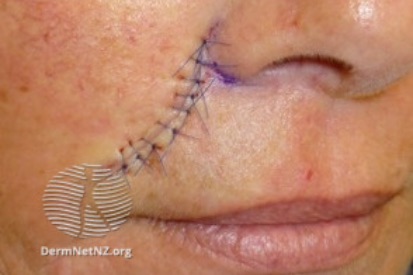Surgical Excision
Examples of Surgical Excision






What is Surgical Excision?
The procedure, conducted under local anesthesia, entails a precise incision around the lesion to ensure complete removal with a margin of healthy tissue. Following excision, the incision is closed with stitches, and the extracted tissue is sent to a laboratory for analysis.
What are the Benefits of Surgical Excision
Offering immediate results and low recurrence rates, surgical excision addresses concerns promptly. Surgeons prioritize aesthetic outcomes by minimizing scarring, making it a reliable approach for the removal of growths with both diagnostic and therapeutic benefits.
How Brentwood Dermatology Can Help
Surgical Excision FAQs
The excision surgery itself should not be painful, as your provider will likely numb the area with local anesthesia before the procedure. However, you may experience some swelling, soreness, or pain following the procedure. Your provider may recommend icing the area and taking pain medication to minimize any discomfort you may have.
Our dermatologists find that most excision wounds heal in about one to three weeks following the procedure. If a skin graft or flap was required to close the wound, the healing process may take up to two months to completely heal.
Yes, surgical excision often leaves a scar, which is typically the size of the incision. Before your procedure, talk to your doctor about how the scar may look and how to care for your incision after the procedure to minimize scarring.
What to Expect at Your Surgical Excision Appointment
The dermatologist will precisely remove the lesion, including a margin of healthy tissue, followed by closure with stitches. Postoperative care guidelines, including wound care and activity restrictions, will be provided, and follow-up appointments may be scheduled as needed. Throughout the appointment, the dermatologist prioritizes your comfort, information, and readiness for a successful surgical excision experience.
How to Prepare for Surgical Excision
Follow specific pre-procedure instructions from your dermatologist, which may include adjusting medications or skincare routines. Take the opportunity during the consultation to ask questions about the procedure and postoperative care.
Planning for Recovery after Surgical Excision
Featured Products for Surgical Excision

iS Clinical Pro Heal Serum Advance+
Pro-Heal Serum Advance+ features our scientifically advanced L-Ascorbic Acid (Vitamin C), combined with a superior form of Olive Leaf Extract and pure Vitamins E and A. This powerful formulation significantly increases antioxidant protection while helping improve the appearance of compromised, blemish-prone, and aging skin. 30 mL e 1 fl. oz.

SkinMedica Total Defense & Repair Broad Spectrum Sunscreen
Revolutionary non-tinted superscreen goes beyond UV protection to defend against harmful infrared rays while supporting the skin’s ability to restore itself. Appropriate for all skin types. 65 g / 2.3 oz
